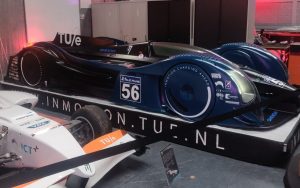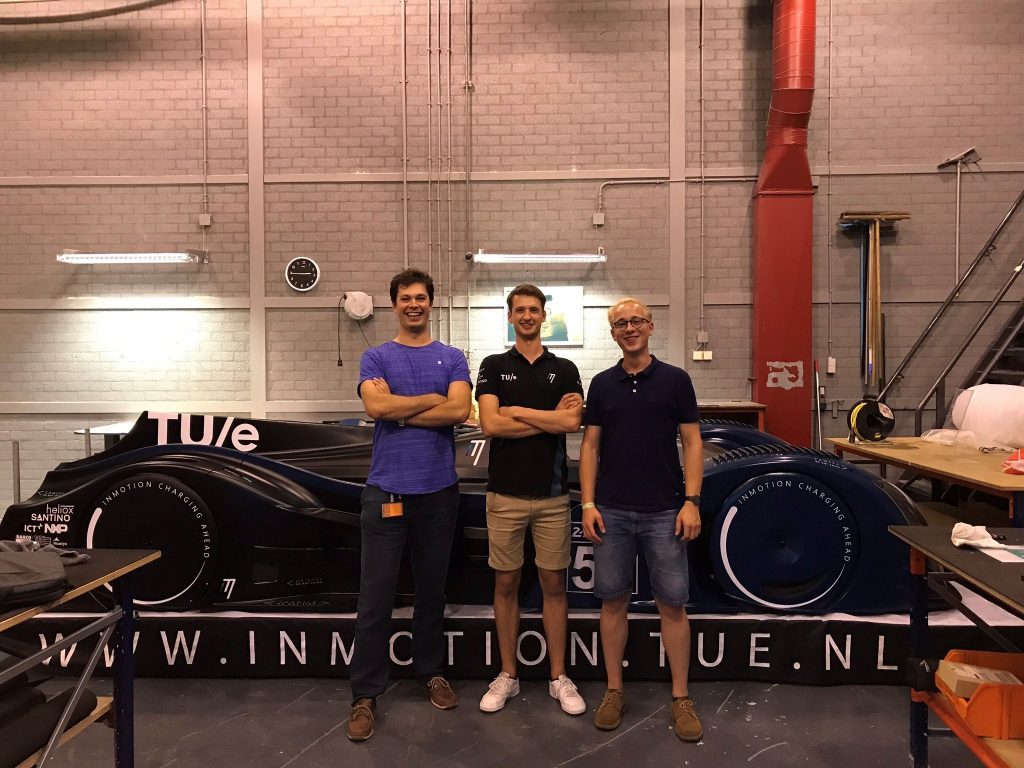Caspar, 32 years old, working via ALTEN (Mechatronics) for TNO with a penchant for the automotive industry, is besides his daily work also coach for the student team InMotion. A team that is developing a fully electric racing car, and eventually wants to have it race along with the 24 hours of Le Mans. A predilection for the automotive industry
After Caspar obtained his Bachelor’s degree in Medicine in Utrecht, he also obtained his Bachelor’s and Master’s degrees in Mechanical Engineering from Delft University of Technology. For this study he did an internship at Volvo in Sweden. There he worked on a new power steering control strategy. After his studies he started his first job in Formula 1 with the McLaren Racing team. Here he worked on the development of new algorithms for a simulator and on new simulations for the development of the car.
Because Caspar wanted to move to the Netherlands again, he came into contact with ALTEN, where he immediately felt a click. After several conversations he choose for ALTEN. Meanwhile he has worked on several projects, such as for Bosch Transmission Technology in Tilburg and a number of internal Robotics projects. Currently he is working on a project of TNO, developing a ‘platooning’ system: self-propelled and communicating trucks.
Taking part in Le Mans with an electric racing car
InMotion is a student team from Eindhoven University of Technology (TUe). They are up to the challenge to develop a fully electric racing car for the 24 hour race of Le Mans. They try to take the technology behind the battery to the next level.
Our consultant Caspar came into contact with one of the team members of InMotion through acquaintances. Because of his background and experience, the aspects in which he assists the team are vehicle dynamics and simulation tool development. InMotion was given the opportunity to buy the chassis of an existing racing car in the LMP2 category, as a bare chassis without engine and without propulsion. After all, the drive will come from the electric motors, and the ‘fuel’ from the batteries. To achieve this, InMotion will have to develop its own chassis and rear suspension.
Because of the addition of all the batteries to make the car run electrically, and the peripheral parts around it, the car will be a lot heavier than a ‘normal’ racing car. For this reason, the suspension geometry needs to be adjusted. Caspar was able to coach the team by continuing to ask critical questions. Caspar also had to slow down the team from time to time. “They were super excited to apply all kinds of interesting simulation techniques, but often it is wise to stay close to what really works”. In the end, the approach was chosen to reproduce the dynamic properties of the original car as much as possible, using relatively straightforward calculations and simulations, and thus adjust the geometry to compensate for the extra car weight.
The critical timeline of InMotion
When we look at the timeline established by InMotion, there are a few aspects that are going to become critical. One of those aspects is battery development and fast charging. Several parties are developing ever faster charging speeds. In technical terms, this charging speed is expressed in kilowatts (kW). For commercial cars, the current ‘normal’ standard is fast charging with 50 kW. But parties such as Tesla and Porsche are trying to bring this to greater heights with each new model. For example, Porsche currently claims to achieve 350kW at specific charging stations, and with the battery under specific conditions. However, this is not even enough for the team members of InMotion: in order to be competitive at LeMans, the time during charging and therefore standing still has to be kept as short as possible. As a result, they must be able to make a ‘normal’ short pit stop at Le Mans.
Loose ends that need to be tied up

The main focus of InMotion in recent months has been on the development of the battery pack. But the last word has not been spoken on the rear frame. A lot of work has been done to create a toolset which has already largely fixed the rear suspension. Now they have arrived at the finishing touches, and it’s all about thinking about the production methods. An example of this is the welding work on the frame around the battery and the engines. Every time you weld a metal joint, the metal structure changes and with it the load-bearing capacity of the material. This means that you have to think carefully about how to weld, how to load such a structure, and how to assess those loads properly, before you start working. For this you need a lot of experience. That is why InMotion has sought external experience for this specific part. “I think that in the period after this, when the car is actually driving, it can be very interesting to coach the team in looking at what the performance of the car is like, how the rear suspension holds up, how the balance appears to be, and to see if I can challenge them a bit with the right questions in order to get more performance out of the car”.
For more information about InMotion, visit www.inmotion.tue.nl. We wish them good luck with the further development of the car and look forward to seeing their performance at Le Mans!



